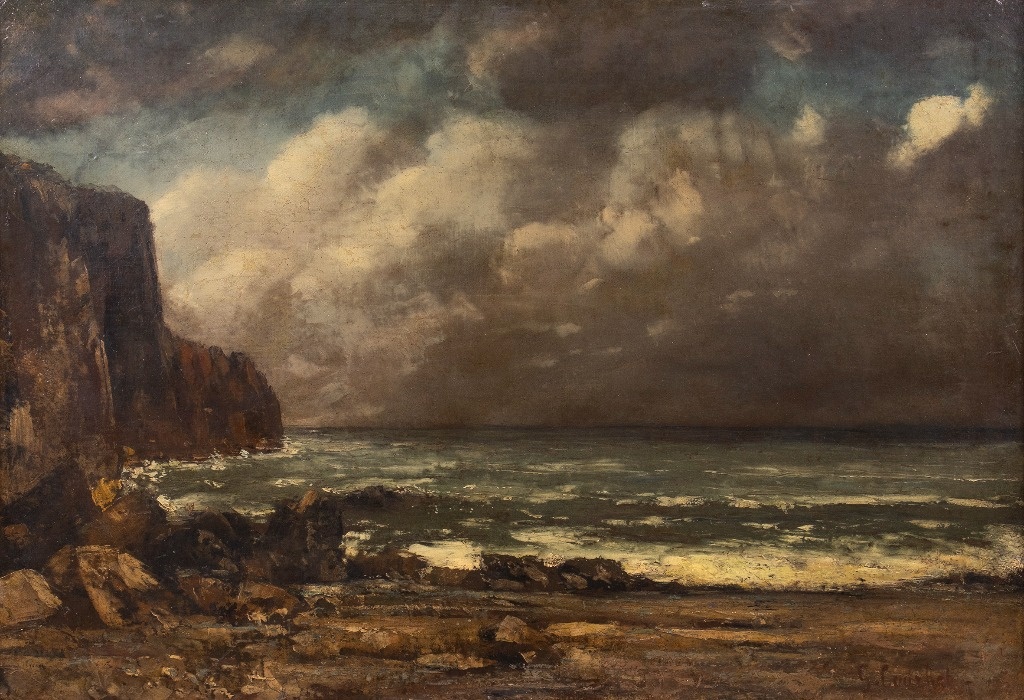Mexico City. Works like Portrait of a young woman in pink, by Pierre-Auguste Renoir; Three dancers, by Edgar Degas; Desdemona and Emilia, by Eugène Delacroix; Haymaking, by Camille Pissarro; Portrait of a Dutch girl, the Joseph Israëls; copper polishers, by Joseph Bail, and Moonlight on the banks of the Touques River, by Eugéne Boudin, are part of the exhibition From Romanticism to modernity: Soumaya Museum Collection, which is exhibited in the Regional Museum of Querétaro attached to the INAH Center.
The exhibition is a review of the artistic movements in 19th century Europe, which marked the new paths of art, and is made up of 72 works by 69 artists. Highlights include paintings painted outdoors, canvases and impressionist drawings, Belle Epoque, the record of the birth of modern Paris, photographs and the avant-garde break.
It is a very important exhibition with the most outstanding artists of the 19th century. They are original works that the Carlos Slim Foundation has in its collections; Bringing the pieces to Zacatecas and Querétaro is a possibility of bringing new audiences closer, especially because after the pandemic we had a decrease in attendance at museums, and this exhibition is an opportunity to reposition ourselves
he expressed in an interview with The Conference Rosa Estela Reyes García, director of the Center of the National Institute of Anthropology and History in Querétaro.
He emphasized that there are pieces by artists who are exhibited in the museum for the first time, such as those by the French Pissarro, Degas, Renoir, Armand Guillaumin and Albert Lebourg.
Likewise, the painter of light of German origin, Max Liebermann, and the creators Raoul Dufy, Pierre Bonnard and Maurice de Vlaminck, as well as four women artists: the Italian Emma Ciardi, the English Dorothea Sharp, the Belgian Madeleine Lefebvre and the American Martha Walther.
They are artists that can normally be seen in European museums, but not in a place in the interior of our country, hence the relevance it has; In addition, we must highlight that they are not generally seen in a pre-Hispanic art museum.
added Reyes García.
The director of the INAH Querétaro Center explained that, more than chronological, the curation of the exhibition is divided into thematic nuclei, in order to show the characteristics of the changes in painting in the 19th century, when painters had an interest in life. everyday life and in social movements.
The public that attends the Regional Museum of Querétaro directed by Paulina Macías will find an explanation of why Romanticism was the first liberal artistic movement, whose imprint extended until the last third of the 19th century. Romanticism is not precisely situated in the choice of themes, nor in the exact truth: it is a way of feeling.
According to the curators, with social realism the artist looked at the earth and, for the first time, the protagonists were farmers, workers, fishermen, weavers, copper polishers, that is, everyday life.
It was also the era that saw the birth of photography, and Paris was consolidated as the cultural capital of the West, the creators left their studies and with that freedom from academic rules they found in nature the means to express themselves.
The exhibition was divided into the following nuclei: Body, since the anatomical representations experienced one of the most radical transformations in romanticism; Portrait, where it is observed that the rise of modern cities allowed the intimate portrait of mothers in domestic spaces or when walking through streets and parks; Social realism, which explains that 1848 marked a milestone for Western history: revolutions, nationalist movements and love of the land; Landscape, about the artists who left the workshop to paint outdoors and for the first time were able to transport their pigments in zinc tubes that prevented them from drying, to finish their works in the studio; Marinas, which alludes to the sea as a source of inspiration and representation of the sublime, and Modernity, where we see what is related to the Industrial Revolution, the invention of photography and the telegraph, and the civilizational change that was recognized at the Universal Exhibitions from London. and Paris to New York, Philadelphia, Chicago, Boston and San Francisco, in the United States.
From Romanticism to modernity: Soumaya Museum Collection It will remain open to the public until October 6 at the Querétaro Regional Museum (Corregidora Sur 3, Historic Center) from Tuesday to Sunday, from 9 a.m. to 6 p.m.
#Querétaro #receives #work #masters #19th #century #European #art
– 2024-04-30 22:26:54
